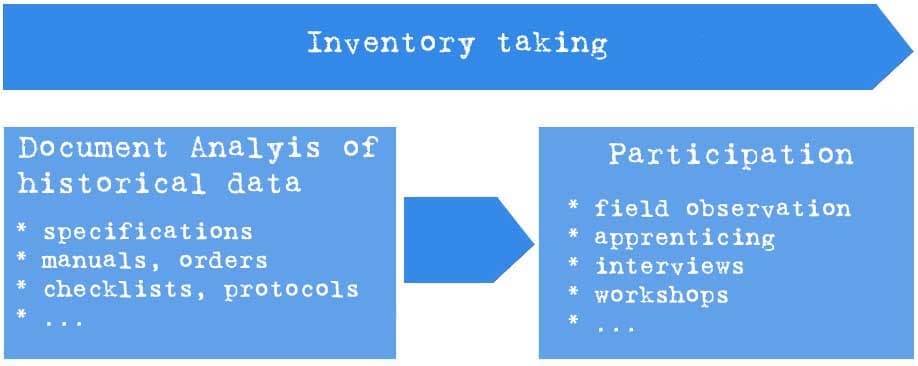What is a Document Analysis?
Smartpedia: Document Analysis is a technique for the collection of historical data that has been recorded in the form of documents.
Finding valuable information in documents
Document analysis is a technique for collecting data from historical data that is recorded, stored, managed and versioned in the form of documents.In the context of companies, historical data refers to information that was created and documented in earlier projects and developments. Document analysis – which is sometimes referred to as source analysis – includes not only electronically stored documents, but also printed information that is not available on the intranet or Internet.
The broader the concept of document analysis, the more sources of information can be identified:
- text files,
- spreadsheets,
- sketches,
- graphics,
- drawings,
- plans and also
- films or photos.
Experience reports, books, certificates and testimonials also serve as sources of information.
Advantages of document analysis
Document analysis offers several advantages as a survey technique:
- The analysis of the data does not disturb the operational sequence or only minimally.
- The effort required to prepare the analysis is much less than for field observation, interviews or the requirements workshop.
- The analysis of the data can be interrupted and continued at any time.
- The data source is not falsified by the document analysis. Historical data can often be interpreted, but there is no danger of conscious or unconscious influencing of persons, e.g. in the context of oral opinion polls.
Document analysis is thus an important part of an inventory, especially since the information found can be actively used for other formats (field observation, apprenticing, interviews or workshops).
Evaluation of the information found
Even if document analysis offers advantages in the determination of data, there are also aspects to consider in the evaluation of the information found:
- How up-to-date is the information found? Are they still valid?
- For what and how well can the historical information be used in the present?
- How well does the found data actually fit the object of investigation?
- What were the contextual conditions for document production at the time?
- How is the qualitative or quantitative evaluation of the documents carried out?
- How complete, consistent, credible, authentic and representative is the documented information and who evaluates it if necessary?
In principle, a document analysis can deliver rapid results – provided that access to documents is guaranteed. Depending on the application scenario, it can, for example, make it easier for companies to familiarise themselves with tasks, serve as a source for determining requirements, risks, ideas, etc., or serve as a template for structuring data. With appropriate consideration of the relevance of the found information, the data analysis makes a lot of sense.
Notes:
Here you will find an article about the modern possibilities of Text Analytics.



